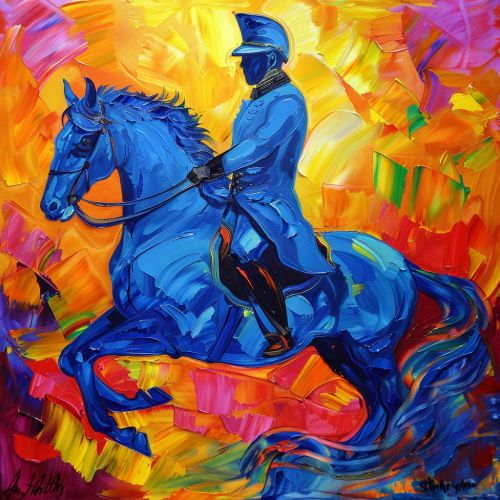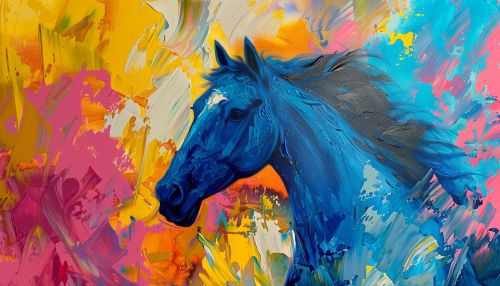Blue Rider
Origins and Formation
The Blue Rider (Der Blaue Reiter) was a movement in the field of expressionist art, originating in Germany at the beginning of the 20th century. The group was founded by Russian artist Wassily Kandinsky and German painter Franz Marc in 1911. The name of the movement was derived from Kandinsky's painting "Der Blaue Reiter", which depicted a blue horseman against a vibrant background.


Philosophy and Aesthetic
The Blue Rider movement was characterized by a rejection of the established norms of the art world at the time. The artists associated with the movement sought to express spiritual truths through their art, often using abstract forms and vibrant colors. They believed that color and form could convey emotion and meaning in a way that traditional representational art could not. This emphasis on the spiritual and emotional aspects of art was a defining characteristic of the Blue Rider movement.
Key Figures
In addition to Kandinsky and Marc, several other artists were associated with the Blue Rider movement. These included Gabriele Münter, Alexej von Jawlensky, Marianne von Werefkin, and August Macke. Each of these artists brought their unique perspectives and styles to the movement, contributing to its diversity and richness.
Influence and Legacy
The Blue Rider movement had a significant impact on the development of modern art. Its emphasis on abstraction and emotional expression paved the way for later movements such as Abstract Expressionism. Despite its relatively short lifespan (the group disbanded with the onset of World War I), the Blue Rider movement left a lasting legacy in the art world. Its influence can be seen in the work of many later artists, and its contributions to the field of abstract art are still recognized and celebrated today.
